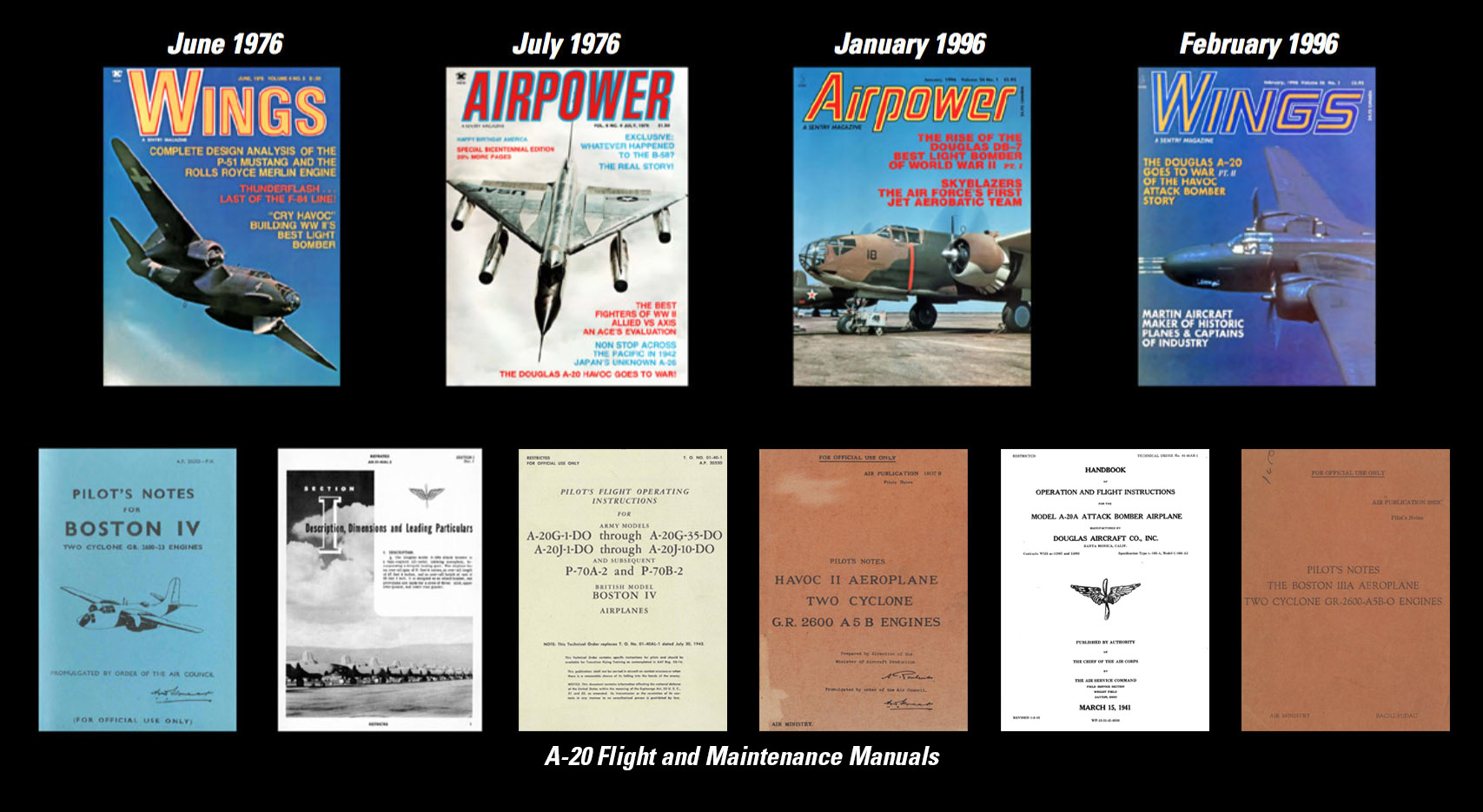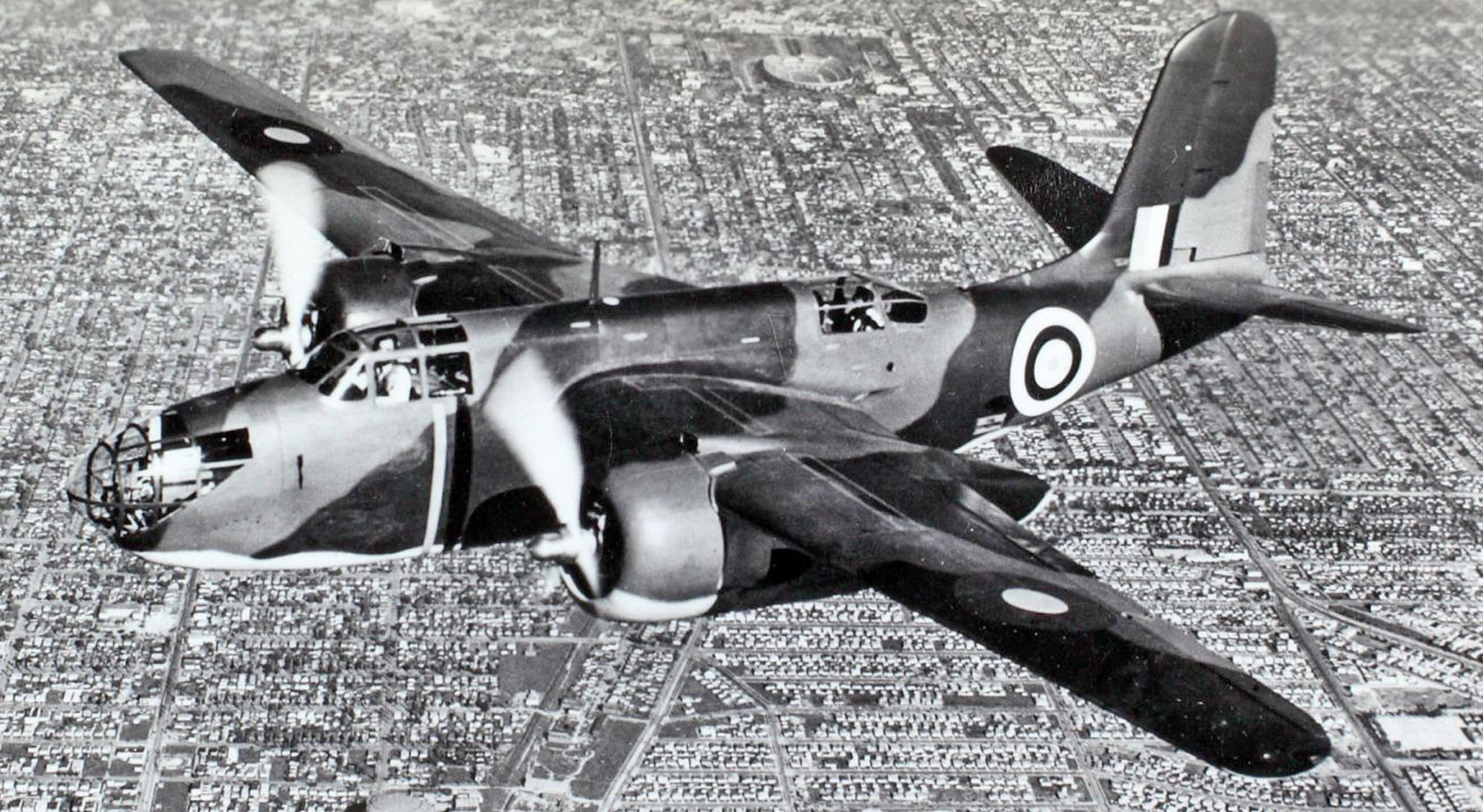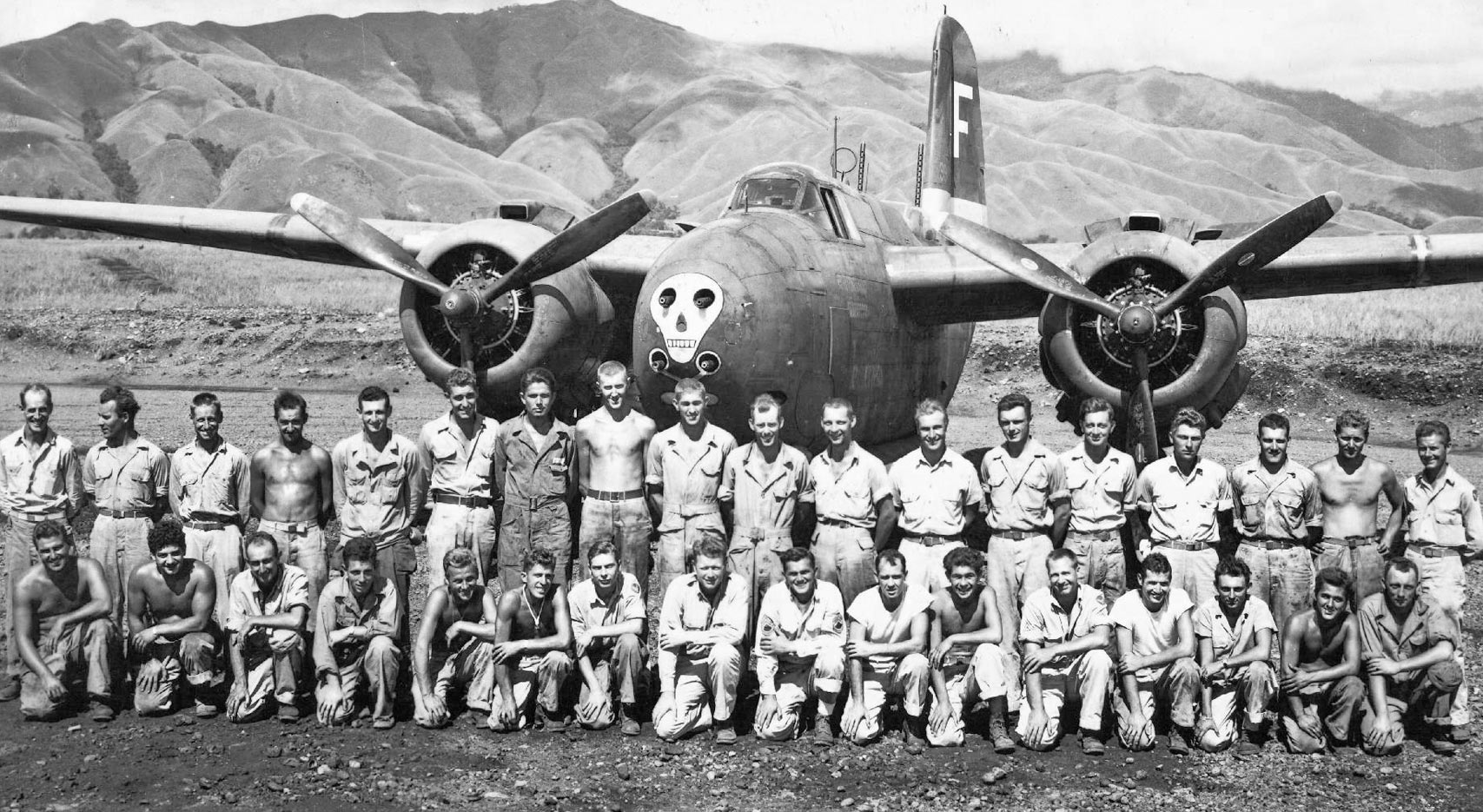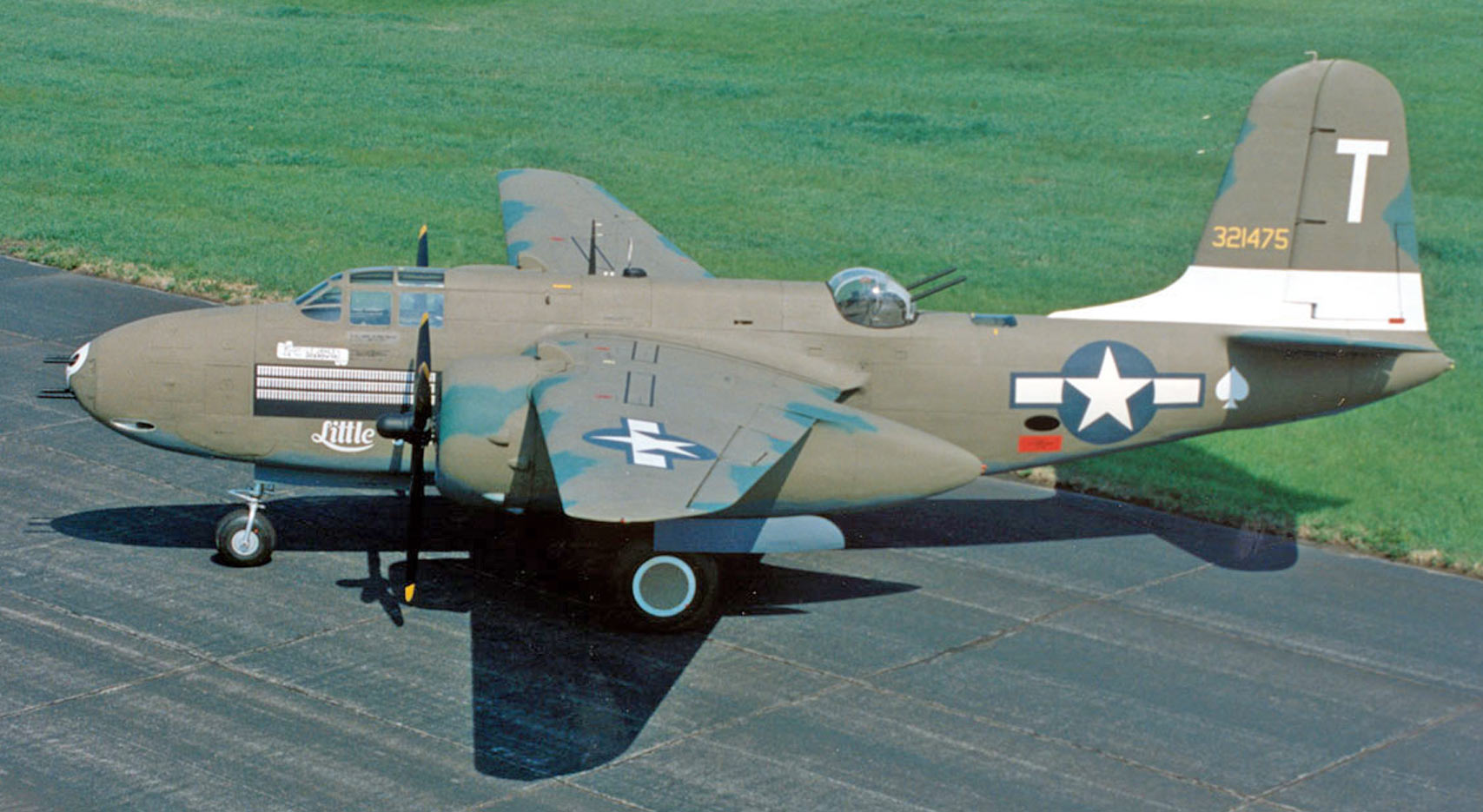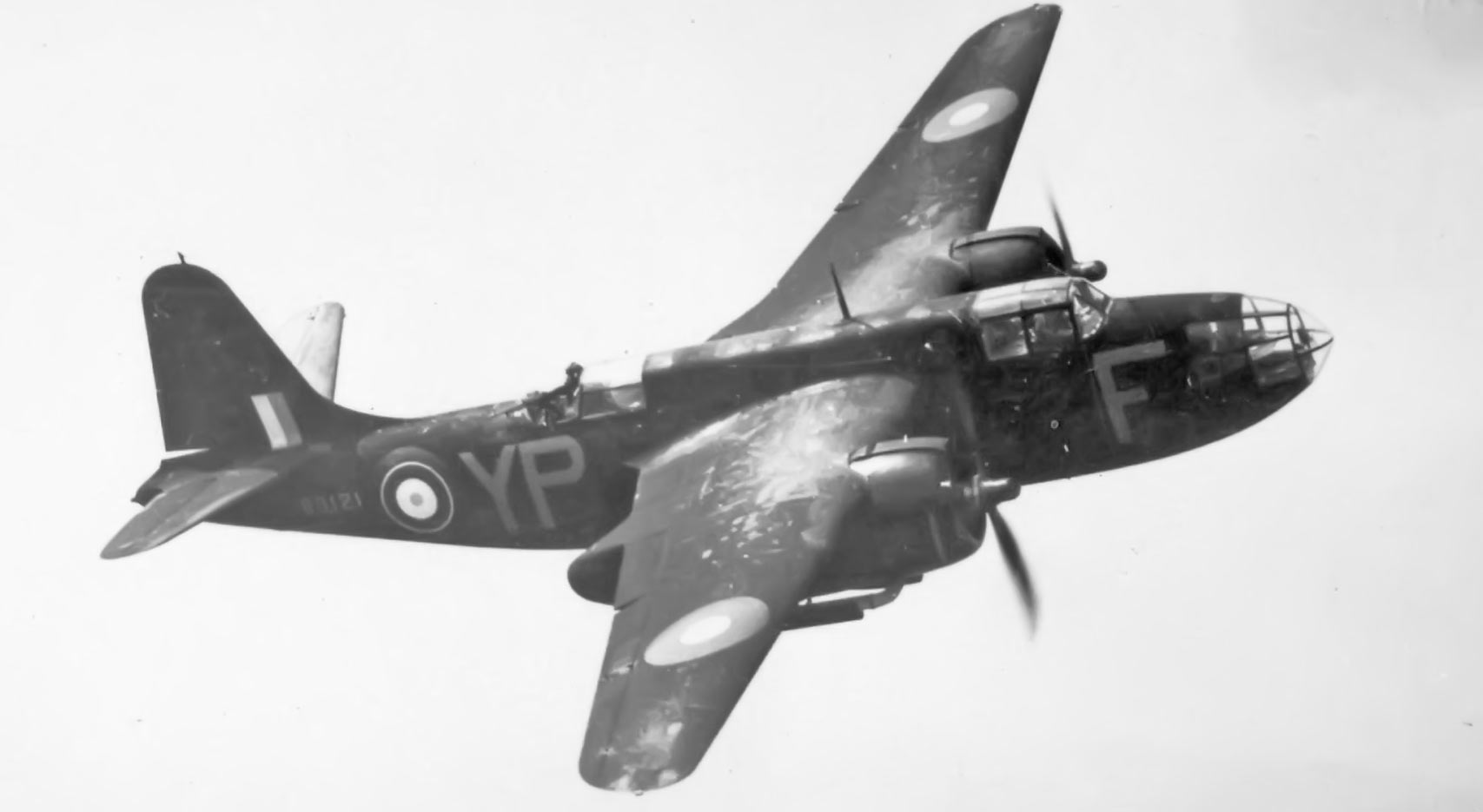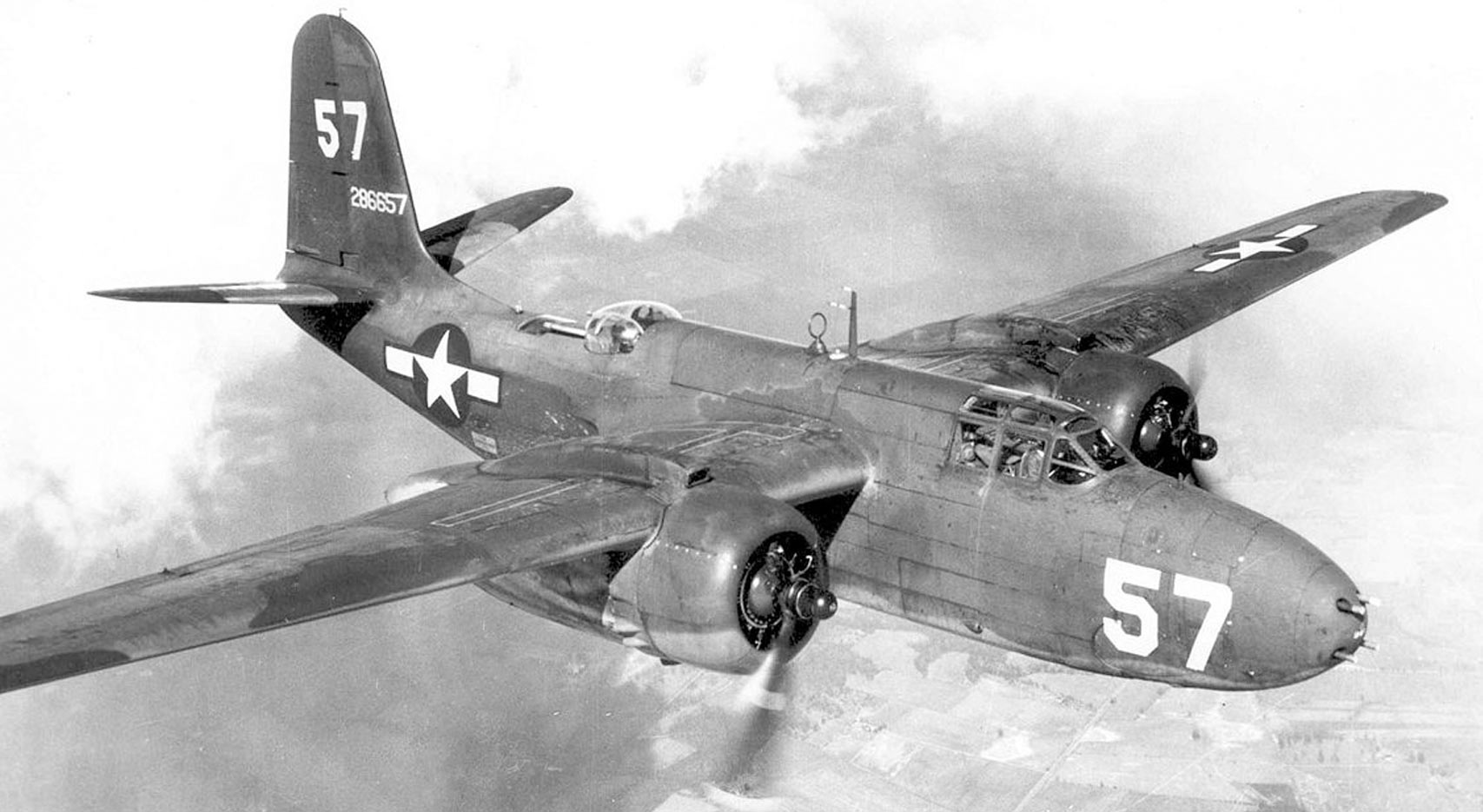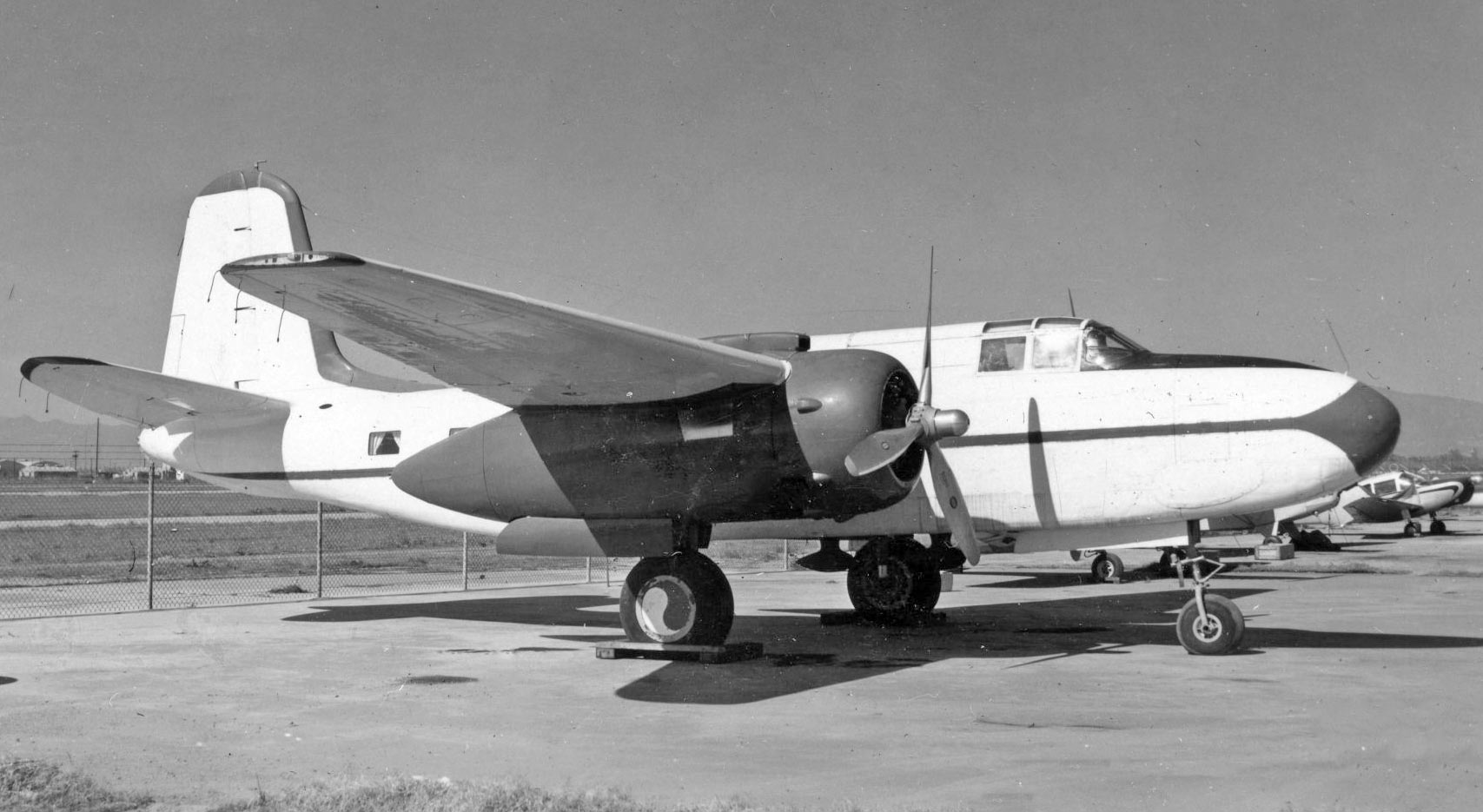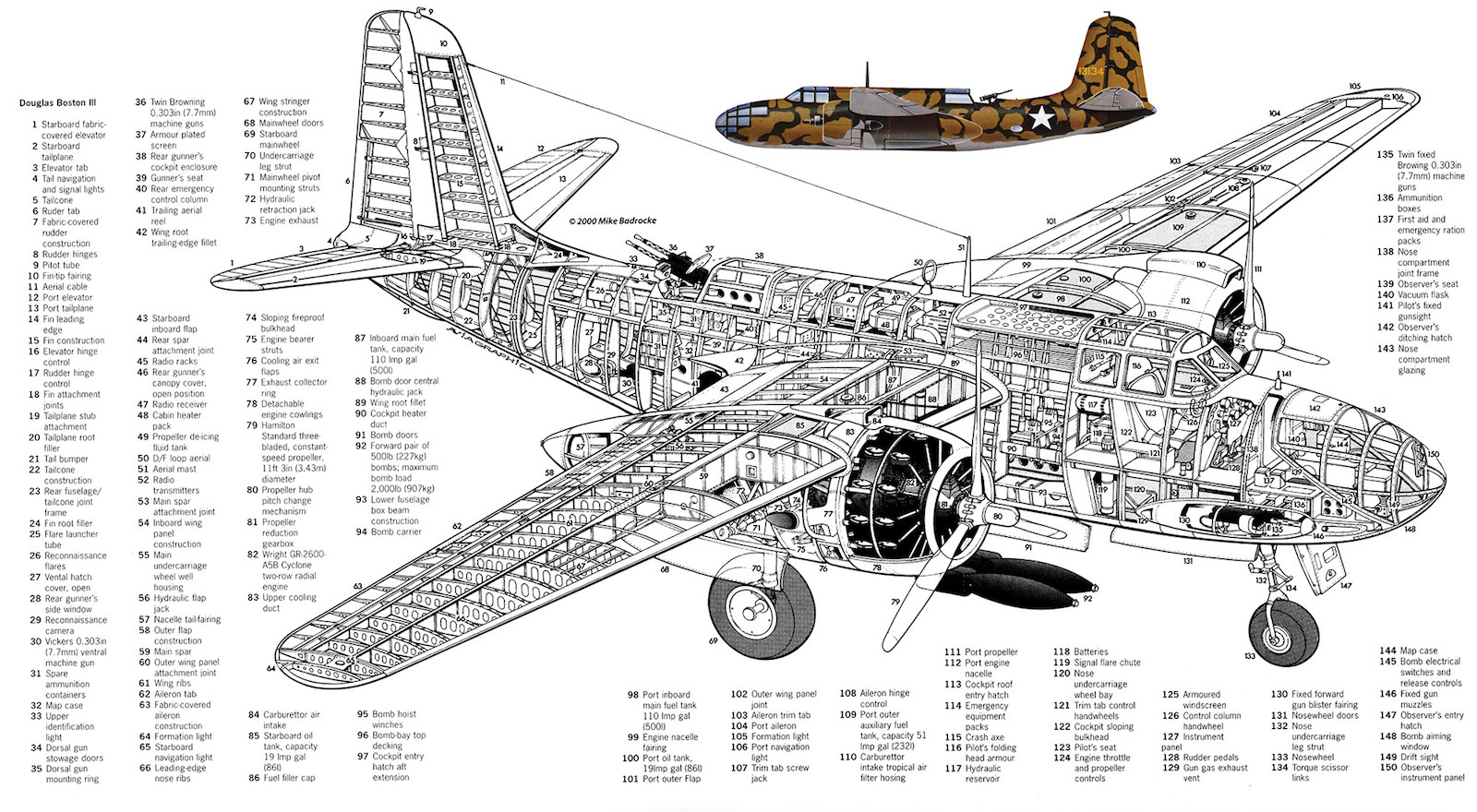Price: $19.95
- 4 magazines, 6 manuals, & photos
- PDF contains 598 pages
- Content is keyword searchable
- Print a personal copy
- Pay via PayPal or Credit Card
- International orders welcome!
- Download files upon payment
June 1976
- Cry Havoc, the Douglas A-20
- The Making of the P-51 Mustang, Rolls Royce Merlin engine
- Thunder Maker, Part II… the F-84 story
July 1976
- Cry Havoc, Part II… the A-20 goes to war
- Across the Pacific, Flying nonstop from Tokyo to New York in 1942
- History of the Convair B-58 Hustler
- The Best of the Breed, handicapping German and Allied fighters
January 1996
- Rise of the Douglas DB-7, Best Light Bomber of WWII
- Skyblazers, USAF’s first Jet Aerobatic Team
February 1996
- Douglas A-20 Goes To War
- Martin Aircraft, Maker of Historic Planes & Captains of Industry
Manuals & Photos
- A-20 Pilot’s Notes, 1945
- A-20G Shipment Erection Storage
- A-20 Flight Operating Instructions, 1944
- A-20 Havoc II DB7 Engines, 1943
- A-20A Operating Flight Instructions, 1941
- A-20C Boston III Pilots Notes
- Over 150 A-20 photos
Douglas A-20 Havoc
A-20 Specifications
Variants
On Display
Cutaway
General Characteristics
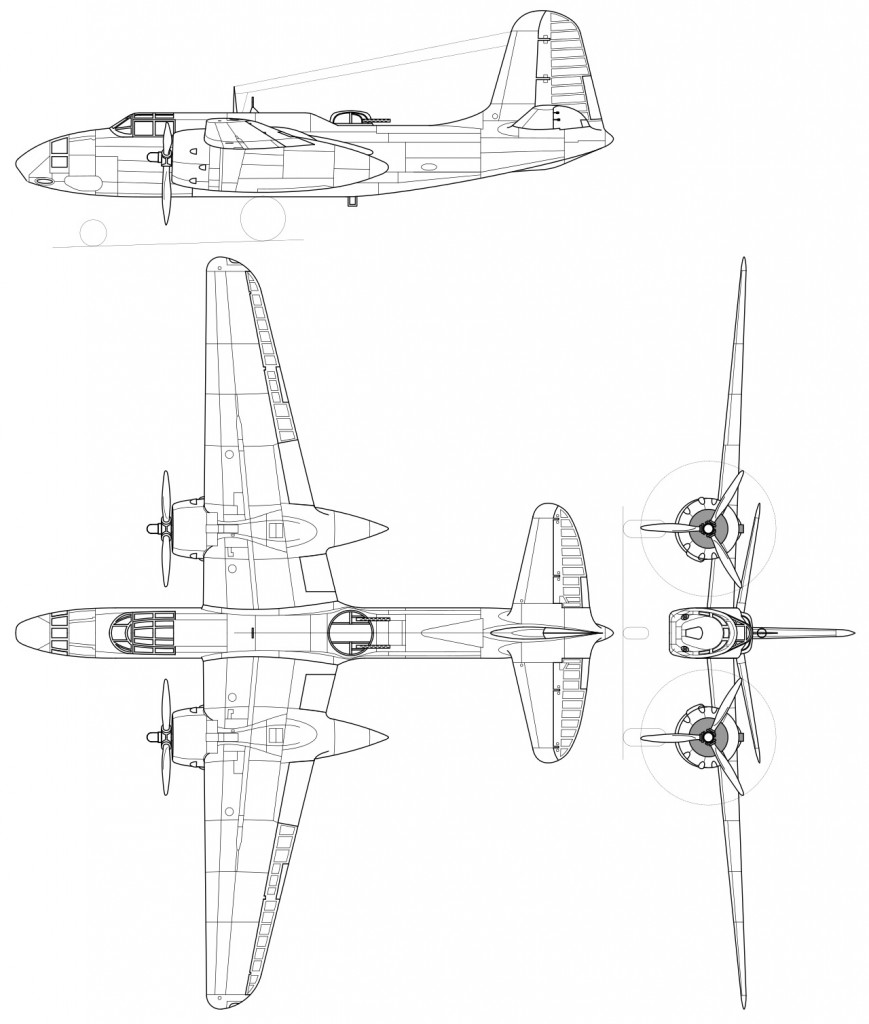
- Crew: 2-3
- Length: 47 ft 11 in (14.63 m)
- Wingspan: 61 ft 4 in (18.69 m)
- Height: 17 ft 7 in (5.36 m)
- Wing area: 465 ft² (43.2 m²)
- Empty weight: 15,051 lb (6,827 kg)
- Loaded weight: 27,200 lb (12,338 kg)
- Max. takeoff weight: 27,200lb (12338 kg) (9,215 kg)
- Powerplant: 2 × Wright R-2600-A5B “Twin Cyclone” radial engines, 1,700 hp (1,268 kW) each
Performance
- Maximum speed: 339 mph (295 kn, 546 km/h) at 10,000 ft (3,050 m)
- Range: 1,050 mi (912 nmi, 1,690 km)
- Service ceiling: 23,700 ft (7,225 m)
- Rate of climb: 2,000 ft/min (10.2 m/s)
Armament
- Guns:
- 3× fixed forward firing (12.7 mm).5in Browning machine guns in the nose
- 2× flexible 0.303 in (7.7 mm) Browning machine guns, mounted dorsaly
- Bombs: 2,000 lb (910 kg)
- Boston I & II
- The Royal Air Force agreed to take up the balance of the French order which was diverted to the UK and the bombers were given the service name “Boston”, with the further designation of “Mark I” or “Mark II” according to the earlier or later engine type.Havoc I – The aircraft was generally unsuitable for use by the RAF since its range was too limited for daylight raids on Germany. Many of the Boston Mk II, plus some re-engined Mk Is, were converted for nighttime duties – either as intruders with 2,400 lb (1,100 kg) of bombs, or as night fighters with AI Mk. IV radar. These were known collectively as Havoc Mk I. A total of 181 Bostons were converted to Havocs. In interdiction raids, Havoc intruders caused considerable damage to German targets.
- Havoc-Pandora
- Twenty Havocs were converted into “intruder” aircraft, carrying the Long Aerial Mine (LAM), an explosive charge trailed on a long cable in the path of enemy aircraft in the hope of scoring a hit. Trials conducted with lone Handley Page Harrows dropping LAMs into the stream of German bombers were not successful, and the Havocs were converted back to Mk I intruders.
- Havoc I Turbinlite
- Havoc fitted with a 2,700 million candela searchlight in the nose; the batteries for it carried in the bomb bay. A radar operator sat in the after fuselage. They were unarmed, and they were supposed to illuminate targets for accompanying Hawker Hurricane fighters, but in practice the conspicuous light made them easy targets for German gunners. A total of 31 aircraft were converted.
- DB-7A / Havoc II
- The French Purchasing Commission ordered 200 more bombers, to be fitted with 1,600 hp (1,195 kW) Wright R-2600-A5B Twin Cyclone engines. These were designated as the DB-7A by Douglas Aircraft. None of these were delivered before the fall of France and they were sent to the UK instead. These were converted into night fighters, by the addition of 12 0.303 inch machine guns in their noses and extra fuel tanks. They had a top speed of 344 mph (550 km/h) at higher altitudes. A total of 39 aircraft were used briefly as Turbinlites.
- DB-7B / Boston III
- The DB-7B was the first batch of this model to be ordered directly by the Royal Air Force. This was done in February 1940. These were powered by the same engines as the DB-7A, with better armor protection. Importantly, these had larger fuel tanks and they were suitable for use by the RAF as light bombers. This was the batch for which the name “Boston” was first assigned but since the DB-7s intended for France entered service in the RAF first, the aircraft in this order were called the Boston Mk III. Among other combat missions, they took part in the attacks on the German warships Scharnhorst, Gneisenau and Prinz Eugen during their dash through the English Channel (Operation Cerberus) and the raid on Dieppe (“Operation Jubilee”). Three hundred Boston III were produced and delivered and some of them were converted for use as night fighters.
- DB-73
- A variation on the DB-7B/Boston III built for a French government order and featuring French instruments and secondary equipment; of the 480 DB-73s ordered by France, 240 were built by under license by the Boeing Company in Seattle.[14] None were delivered, due to the fall of France, the DB-73 block was ordered by the RAF, after conversion to the Boston III configuration. However, following the German invasion of the Soviet Union, 151 DB-73s were provided to the USSR. Following the Japanese Attack on Pearl Harbor, a further 356 DB-73s were taken up by the USAAF, which transferred 22 to the Royal Australian Air Force (RAAF) for use in the South West Pacific theatre. Australian sources usually list these aircraft as DB-7B.
- DB-7C
- This was a Dutch Indies Air Force version intended for service in the Dutch East Indies, but the Japanese conquest of the East Indies was complete before they were delivered. Part of this order was stranded in Australia in the so-called “lost convoy”, and the first 31 Bostons were assembled at Richmond Airbase in New South Wales and flown by No. 22 Squadron RAAF during the campaign against Buna, Gona, and Lae, New Guinea. The assembly of these 31 bombers was hampered by the fact that their manuals and instrument panels were printed in Dutch. The rest of this order were sent to the Soviet Union which received 3,125 of the Douglas DB-7 series. When shipments to the UK finally resumed, they were delivered under the terms of the Lend-Lease program. These aircraft were actually refitted A-20Cs known as the Boston IIIA.
- A-20
- The original American indifference to the Model 7B was overcome by the improvements made for the French and British, and the United States Army Air Corps ordered two models, the A-20 for high-altitude bombing and the A-20A for low and medium altitude combat. Both were similar to the DB-7B. The A-20 was to be fitted with turbosupercharged Wright R-2600-7 engines, but these were bulky and the prototype suffered cooling problems, so the remainder were completed with the two-stage supercharged R-2600-11, 59 as P-70 fighters and 3 as F-3 reconnaissance aircraft. One A-20 was evaluated by the U.S. Navy as the BD-1, while the U.S. Marine Corps flew eight as the BD-2.
- A-20A
- The U.S. Army ordered 123 A-20As with R-2600-3 engines, and 20 more with the more powerful R-2600-11. They entered service in the spring 1941. The Army liked the A-20A because of its good performance and because it had no adverse handling characteristics. Nine of them were transferred to the RAAF in 1943. The USAAF used the British name Havoc for the A-20A, while the RAAF referred them as Bostons.
- A-20B
- The A-20B received the first really large order from the Army Air Corps: 999 aircraft. These resembled the DB-7A rather than the DB-7B, with light armor and stepped rather than slanted glazing in their noses. In practice, 665 of these were exported to the Soviet Union, so only about one-third of them few served with the USAAF.
- A-20C
- The A-20C was an attempt to develop a standard, international version of the DB-7/A-20/Boston, produced from 1941. It reverted to the slanting nose glass, and it had RF-2600-23 engines, self-sealing fuel tanks, and additional protective armor. These were equipped to carry an external 2,000 lb (907 kg) aerial torpedo. A total of 948 were built for Britain and the Soviet Union, but many were retained by the USAAF after the Japanese attack on Pearl Harbor. The Soviet A-20s were often fitted out with turrets of indigenous design.
- A-20G
- The A-20G, delivered from February 1943, would be the most produced of all the series – 2850 were built. The glazed nose was replaced by a solid nose containing four 20 mm (.79 in) Hispano cannon and two .50 in M2 Browning machine guns, making the aircraft slightly longer than previous versions. After the first batch of 250, the unreliable cannon were replaced by more machine guns. Some had a wider fuselage to accommodate a power driven gun turret. Many A-20Gs were delivered to the Soviet Union. The powerplant was the 1,600 hp (1,200 kW) R-2600-23. US A-20Gs were used on low-level sorties in the New Guinea theatre.
- A-20H
- The A-20H was the same as A-20G, continued with the 1,700 hp (1,270 kW) R-2600-29. 412 of these were built. The takeoff weight was raised to 24,170 lb (10,960 kg).
- ZB-20H
- In 1948, the last surviving A-20H in United States service was redesignated “B-20” with the elimination of the ‘A for Attack’ category, and was given the “Z” prefix as being obsolete.
- A-20J / Boston IV
- The A-20J carried an additional bombardier in an extended acrylic glass nose section. These were intended to lead bombing formations, with the following standard A-20s dropping their bombs when signaled by the leader. A total of 450 were built, 169 for the RAF which designated them Boston Mk IV from the summer of 1944 onwards.
- A-20K / Boston V
- The A-20K (Boston Mk V in RAF parlance) was the final production version of the A-20 series, the same as the A-20J except for R-2600-29s instead of -23s.
- P-70
- In October 1940, the USAAC felt a need for long-range fighters more than attack bombers, sixty of the production run of A-20s were converted to P-70 night fighters, all delivered by September 1942. They were equipped with SCR-540 radar (a copy of the British AI Mk IV), the glazed nose often painted black to reduce glare and hide the details of the radar set, and had four 20 mm (.79 in) forward-firing cannon, each provided with 120 rounds, in a tray in the lower part of the bomb bay, while the upper part held an additional 250 gal (946 ltr) fuel tank. In 1943, between June and October, 13 A-20Cs and 51 A-20Gs were converted to P-70A. Differences were to be found in the armament, with the 20mm cannon package replaced by an A-20G gun nose with six .50 caliber guns installed, the SCR-540 radar installation being carried in the bomb bay with the transmitting antenna protruding between the nose guns. Further P-70 variants were produced from A-20G and J variants. The singular airframe P-70B-1 (converted from an A-20G) and subsequent P-70B-2s (converted from A-20Gs and Js) had American centimetric radar (SCR-720 or SCR-729) fitted. The P-70s and P-70As saw combat only in the Pacific during World War II and only with the USAAF. The P-70B-1 and P-70B-2 aircraft never saw combat but served as night fighter aircrew trainers in the US in Florida and later in California. All P-70s were retired from service by 1945.
- F-3A
- The F-3A was a conversion of forty-six A-20J and K models for night-time photographic reconnaissance (F-3 were three conversions of the original A-20). This variant was employed in the European Theater by the 155th Photo Reconnaissance Squadron which began its deployment as the 423rd Night Fighter Squadron. The 423rd was converted to its photo mission as the 155th Photo Reconnaissance Squadron in part because of knowledge of night fighter tactics which could be used to defend against German aircraft. Although the armament was removed, the crew of three was retained, consisting of a pilot, observer, and navigator. The first Allied aircraft to land at Itazuke, Japan after the August 1945 surrender was an F-3A.
- BD-1
- One A-20A was bought in 1940 by the United States Navy for evaluation for use by the United States Marine Corps. The Navy/Marine Corps did not have any priority on the production lines, so the BD was not put into service.
- BD-2
- In 1942, eight former Army A-20Bs were diverted to the United States Navy for use as high-speed target tugs. Despite the addition of the target-towing equipment and the removal of all armament and the provision to carry bombs, the aircraft were still designated BD in the Bomber sequence. They were withdrawn from service in 1946.
- O-53
- An observation/reconnaissance version of the A-20B powered by two 1,700 hp (1,268 kW) R-2600-7 engines. The original order for 1,489 aircraft was canceled and none were built.
Australia
- 42-86786 – A-20G RAAF Amberley Heritage Centre Queensland. To be held at Amberley until facility to hold aircraft is built at Papua New Guinea National Museum in Port Moresby.
- Boston III RAAF A28-8, RAAF Sqn Code DU-J, RAF s/n AL907 – RAAF Museum, RAAF Base Point Cook in Victoria.
- 42-86615 – A-20G under restoration at the RAAF Museum, RAAF Wagga in New South Wales.
Brazil
- 44-0539 – A-20K Museu Aeroespacial, Campo dos Afonsos in Rio de Janeiro.
Papua New Guinea
- 42-86786 – A-20G stored at the Papua New Guinea National Museum in Port Moresby when dedicated undercover building built.
Poland
- s/n unknown – A-20 Extracted from Baltic sea floor. To be displayed in Krakow National Museum of Aviation after restoration.
Russia
- 43-10052 – Central Air Force Museum in Moscow.
United Kingdom
- 41-19393 – A-20C partial airframe recovered from Russia, an unrestored display at the Wings Museum near Balcombe.
- 43-9436 Big Nig – A-20G under restoration at the RAF Museum in Hendon.
United States
- 43-22200 Little Joe – A-20G National Museum of the United States Air Force at Wright-Patterson AFB in Dayton, Ohio.
- 43-21627 – A-20G for static display by the Pima Air and Space Museum, owned by MARC, adjacent to Davis-Monthan AFB in Tucson, Arizona.
- 43-22197 – in storage, owned by Fantasy of Flight in Polk City, Florida.
- 44-0020 – A-20H to airworthiness by the 1941 Historical Aircraft Group Museum in Geneseo, New York.
- 43-21709 – A-20J to airworthiness by Aero Trader, owned by Lewis Air Legends in San Antonio, Texas.
- 39-741 – F-3A to airworthiness by GossHawk Inc. in Casa Grande, Arizona.


